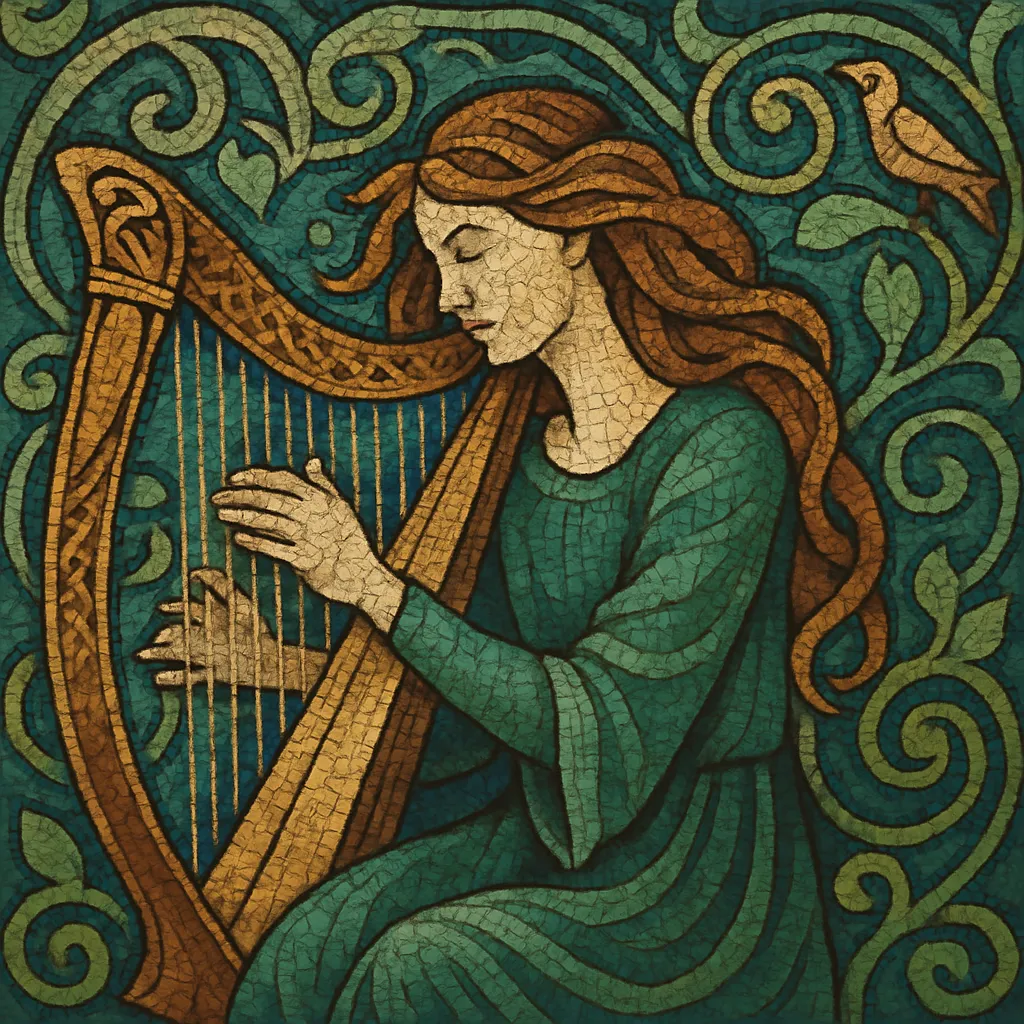Celtic new age blends the timbres and modal melodies of Celtic traditions with the serene atmospheres of New Age and ambient music. It favors ethereal synth pads, spacious reverbs, and gentle acoustic textures, often centering harp, tin whistle, uilleann pipes, fiddle, and airy choral layers.
Harmonically, it leans on modal centers (Dorian, Aeolian, and Mixolydian), drones, and slow-moving progressions that evoke pastoral settings and mythic narratives. Tempos are typically moderate to slow, emphasizing sustained tone, delicate ornamentation, and meditative repetition over rhythmic drive. Vocals—when present—frequently feature layered harmonies in Gaelic or English, reinforcing a sense of timelessness, nature, and spirituality.
Celtic new age grew from the meeting of traditional Celtic music and the 1970s–80s New Age movement, which prized tranquility, nature imagery, and meditative listening. Synthesizers, multitrack layering, and evolving studio reverbs allowed Celtic instrumentation and folk modalities to be presented with a luminous, cinematic sheen.
In the early to mid-1980s, Irish acts such as Clannad helped establish the template by pairing Gaelic vocals and Celtic timbres with atmospheric production. The genre’s global profile rose sharply with Enya’s late-1980s releases, which married layered choral textures, harp-like arpeggios, and shimmering electronics to unmistakably Celtic melodic shapes. This success opened avenues for artists from Ireland, Scotland, Brittany, and beyond to approach Celtic source material through a modern, contemplative lens.
Through the 1990s, artists including Loreena McKennitt and ensembles like Secret Garden brought a neoclassical elegance and world-fusion sensibility, while groups such as Capercaillie and Iona integrated ambient spaciousness into folk-rooted arrangements. Film and television placements amplified the sound’s visibility, linking Celtic new age with themes of landscape, myth, and introspection.
Since the 2000s, the genre has continued to inform ambient pop, chillout, and classical crossover aesthetics, shaping how Celtic timbres are presented in modern production. It remains a touchstone for music designed for relaxation, reflection, and spiritual ambiance, while continuing to inspire hybrid forms that connect heritage traditions with contemporary studio craft.


